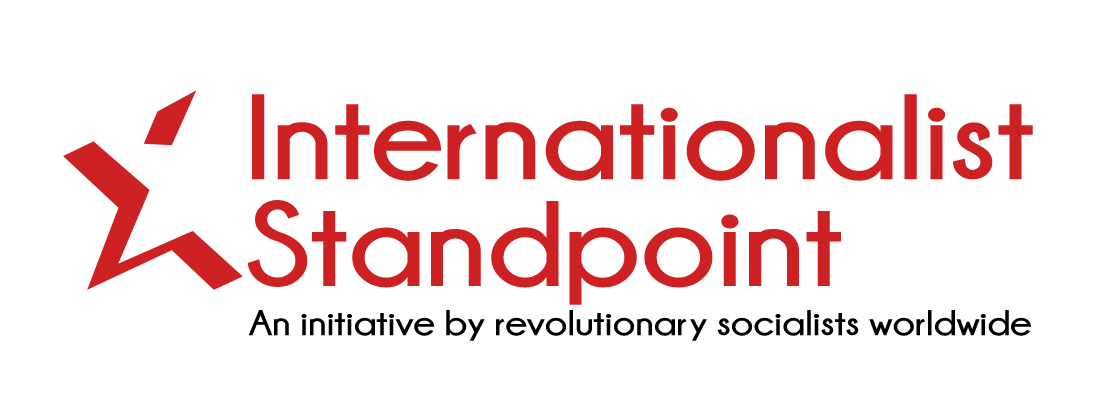A negative result, an opportunity for reflection, the need to revive convergence and conflict.
Notes from Luca Scacchi’s speech at the FLC CGIL General Assembly, June 11, 2025.
On June 8 and 9, five referendums were held in Italy—four on labor issues (aimed at repealing laws that facilitated dismissals, precarious employment, and unsafe conditions in subcontracting) and one on citizenship (to halve the residency requirement to apply for Italian citizenship from ten to five years). The four labor-related referendums were proposed by CGIL (the main Italian union), while the fifth, on citizenship, was promoted by migrant advocacy committees, the Communist Refoundation Party (Rifondazione Comunista), and Europa+ (a liberal, free-market, pro-European formation with a radical background).
A sixth referendum had also been planned, concerning the rules on “Differentiated Autonomy”—a radicalization of Italy’s federal structure, involving the transfer of control over universal public services from the central state to the country’s 21 regions. This would extend beyond healthcare (currently already partially regionalized) to include education, research, transportation, environmental protection, and more. This question was particularly significant: on one hand, it was central to the political agenda of the current reactionary majority (pushed by Salvini’s Lega and meant to balance Meloni’s parallel initiative to introduce a stronger prime ministerial system); on the other hand, it had the potential to galvanize public interest and participation, as evidenced by an unexpectedly successful signature-gathering campaign to submit the referendum, with widespread support in several regions (especially in the South, but not only). This sixth referendum could have fractured the country politically and possibly dealt a significant blow to Meloni and her government. Perhaps not coincidentally, however, it was struck down by the Italian Constitutional Court through a strained interpretation of the law—according to some analyses, influenced by actors close to the Presidency of the Republic—allegedly to avoid undermining the institutional framework during an internationally delicate spring.
The five remaining referendum questions thus faced a coordinated strategy by the current reactionary majority aimed at making them fail by promoting abstention. In Italy, abrogative referendums require a turnout of at least 50% +1 of eligible voters to be valid (roughly 25.6 million votes). Despite a campaign—especially intense in the final month—that raised expectations of not necessarily a win but at least a significant turnout (predicted above 40%), actual participation fell below one-third, marking a clear political defeat.
Particularly noteworthy was the especially poor result of the fifth referendum on citizenship. Despite low overall turnout and a boycott campaign from opposing political forces urging abstention, about 35% of those who did vote, voted No. This is a troubling sign that xenophobic and racist rhetoric still holds sway even within progressive and labor-aligned sectors, as has been seen in recent years and during the campaign itself—including among the industrial working class, in unionized factories, and in traditionally left-wing working-class neighborhoods. This result, in particular, represents a broader setback for the entire movement advocating for the integration and rights of migrants, and gives Lega, Salvini, and Meloni yet another signal of public support for their security-based and repressive policies.
What follows are the notes from an intervention made by Luca Scacchi, comrade of AMR ControVento and member of the class-struggle alternative current in CGIL Le radici del Sindacato [The roots of the Union], delivered during the General Assembly of FLC CGIL (the main governing body of the education, university, and research union) on June 11, shortly after the referendum results were announced.
***
The outcome of the referendum, as acknowledged by the General Secretary of CGIL, was not the one our organization had aimed for and worked toward: reaching the quorum and achieving a bottom-up, participatory change in the legislation on dismissals, precarious work, and workplace safety. For a large organization like CGIL, it is not enough to simply place an issue on the country’s political agenda. Winning the referendums was unlikely, without being backed by mass movements and widespread public awareness, especially after the (perhaps not coincidental) removal of the referendum on differentiated autonomy. That question had gained traction following a lightning-fast signature campaign over the summer. A vote on the Calderoli bill would have taken on an irresistible and broad significance—both socially cross-cutting and politically central to the current reactionary majority. Without that issue on the table, the fragility and risks of the referendum strategy were evident from the outset. The discussion on this was held at the time [in spring 2024, when the union had decided to start the signature collection campaign to submit the referendum]. I expressed my vote during the CGIL General Assembly, and you all know it [The roots of the Union current, as well as some other sectors, voted against the referendum campaign, considering it on the one hand disconnected from mass dynamics, and on the other hand a substitute strategy with respect to the confrontational initiative to be developed on the terrain of contracts and social opposition]. The point now is: what can we learn from this process, and how do we move forward?
When faced with a negative result, the first thing to do is understand what went wrong in order to correct it—even when our direct responsibilities are limited or even marginal. This attitude is part of our history. As Giuseppe Di Vittorio[1] reminded us, if you bear responsibility for a defeat—even just a small part of it—that is where you must start. This was not a theoretical or abstract point: it shaped CGIL’s response to one of its most significant defeats—the outcome of the 1955 internal commission elections at FIAT in Mirafiori[2]. Back then, the CGIL leadership did not blame the working class, its resignation, or its subordination. Nor did they simply point to Valletta’s [the long-time president and managing director of FIAT] authoritarianism, the dismissals, or the punitive departments—which certainly existed, were harsh, and played a role in the outcome. The reflection at that time—one which profoundly influenced the following decade—focused primarily on CGIL’s own practices and structures, on how these had contributed to a moment of difficulty and disconnection from the workers. That reflection involved the centralized bargaining and organizational approach of the previous decade. The defeat became the occasion to fully implement the proposals discussed just months earlier at the first Organizational Conference, giving central importance to the workplace in both union practice (through decentralized bargaining) and in structure (through the creation of workplace union sections).
I recall this historical experience because I was struck by the reaction of several activists and union leaders to the referendum result. On social media—and not only there—a spontaneous tendency emerged to place the blame for the defeat on the workers who did not go to vote. Others emphasized the responsibility of the government and institutions, of the ruling political majority and its members, for having boycotted the referendum and the vote. But such actions were entirely predictable, coming from a reactionary right-wing government. I understand the discouragement—especially after the efforts made and the hopes raised in the final weeks, perhaps too easily even within our own ranks. I understand the disappointment, but this reaction is misguided and harmful. It does not help us understand how those mistaken expectations spread, and more importantly, it does not help us to shape our future action by learning from this negative outcome.
The results are not yet final, but they are now stable. About 15.3 million people voted—roughly 29.9% of the electorate. Turnout was 30.6% in Italy (around 14.1 million) and 23.8% abroad (nearly 1.3 million).
By comparison, in the 2022 general elections, in the constituencies for the Chamber of Deputies in Italy, Valle d’Aosta (single-member), and Abroad, about 12.6 million people voted for the current governing majority, while around 14.9 million voted for the current opposition bloc (broadly defined to include Azione, Italia Viva, Europa+, PD, Five Star Movement, Green-Left Alliance, as well as Di Maio, Unione Popolare, and PCI), not counting other lists (Italexit, Italia Sovrana e Popolare, Cateno De Luca, etc.). We know it well: the right holds a parliamentary majority, but it is not a majority in the country. Participation in these referendums and the votes cast by the broader opposition bloc seem to largely overlap—also in terms of how people voted on the merits of the questions. For the four labor-related referendums, No votes ranged from 1.85 to 2.21 million; for the citizenship referendum, there were over 5.1 million No votes. Even the geographical distribution of turnout seems consistent with this interpretation: Tuscany and Emilia-Romagna were leading, while Calabria and Sicily ranked last. Moreover, many polling station representatives reported the impression that voting was concentrated among the young and the elderly (we’ll see if more detailed analyses confirm this impression).
These data, then, seem to indicate two things. First, one of the key objectives underlying CGIL’s campaign has essentially failed: re-engaging a significant portion of the country’s abstentionists by reigniting a response—focused on labor issues—among those who have abandoned the field of participation, and bringing social interests and class identities back into public debate. This campaign, carried out in workplaces (through assemblies) and in local communities (leafleting at markets, fairs, and neighborhoods), does not appear to have had a meaningful impact. Perhaps—and this calls for deeper reflection—because the generous and widespread activism of our structures took place mostly in the final weeks, and was at times a bit improvised and disorganized. Second, we were ultimately unable to break out of our own field of influence, unable to go beyond our reference bubbles (unionized workplaces, social activism, and the broader opposition bloc). In fact, the persistence of this perimeter may have fed the impression of a significantly higher turnout (around or above 40%, increasing in the final weeks), which greatly contributed to the disappointment felt in recent days. In some ways, this is precisely a sign of a growing disconnect from the broader world of labor.
What emerges in this period is a picture of a stratified labor landscape. The working class is not merely divided by different conditions; it now seems compartmentalized into distinct situations, identities, and even separate cycles of struggle—differing in timing, themes, and methods—that contribute to the fragmentation of both collective consciousness and class belonging. In other words, labor today is a multitude. We’ve seen this clearly in recent months. Think of the metalworkers’ negotiations over the national collective contract (CCNL), focused on wage recovery beyond inflation and redistribution of productivity gains. That campaign has reached yet another round of coordinated strikes across the country this month. This dynamic is also present in other sectors (like railways, telecommunications, or multi-service companies). In the public sector, however, we’re seeing fragmentation: a separate agreement has been signed in the central administrations (between CISL and autonomous unions on one side, CGIL, UIL, and grassroots unions on the other), and negotiations in other sectors are stuck. Since the strike by education and research workers on October 31st, there hasn’t been a single sector-wide strike—despite a wage loss of more than 10% due to inflation over the past few years. At the same time, in commerce, services, and transportation, many contracts have been signed—some of which had been stalled for years—during a period that our sectoral federations consider extraordinary. I think this evaluation is overly generous, and in some cases mistaken, considering the extremely low wage levels, the still modest increases, and the serious contractual conditions faced by some groups (such as private security, to name one). We’ve seen this also within FLC (the school, university and research union). Just think of the discrepancies in raises in the latest renewal of the Education and Research National Contract. Or the difficulties I’ve personally witnessed in connecting precarious workers’ mobilizations with those of other university sectors (faculty and administrative-technical staff), despite having shared demands—such as funding, extraordinary hiring plans, and stabilization measures meant to benefit all segments of university labor. This disarticulation is becoming more and more evident—and we ourselves (CGIL), through our contradictory bargaining strategies and our inability to relaunch united struggles around shared themes, have ultimately gone along with this disarticulation, failing to reverse its course.
So—what now? That’s the question Gianna asked us in her report [referring to Gianna Fracassi, General Secretary of FLC- Federation of Knowledge Workers, editor’s note]. Look, I’m not convinced by some of the ideas currently circulating within CGIL—ideas that, in fact, have been around for some time, both in our internal debate and even in official documents of the organization. I am not convinced by the hypothesis that we can regain space and relevance for union action by focusing on bargaining tables, aiming to co-manage the crisis, the ecological transition, and the new phase of international competition alongside certain supposedly “enlightened” sectors of capital—thus fracturing the social bloc of our adversary and regaining trade union unity through this kind of practical cooperation. I’m not convinced because this reproduces, yet again, the old “producers’ pact” strategy—this time in a context where the very possibility of co-management is being eroded by the scale of economic imbalances and the overarching global dynamic of confrontation between emerging continental blocs. Nor am I convinced by the hypothesis that we can reunify labor through organizational means—an idea that also surfaced during the last Organizational Conference and in its documents—by holding territorial assemblies disconnected from shared struggles, or by assigning a new central role to local labor chambers, which are today increasingly focused on providing services. I’m not convinced, because labor stratification is real and deep. The broad, undifferentiated rural proletariat that underpinned the growth of the labor chambers in the late 19th century no longer exists. Today, processes of recomposition cannot be resolved at the level of forms—they must be tackled through practice.
So, I believe we must start again from the general strike of last November. From there—more than from the 15 million who voted and the 13 million YES votes in the referendums. Because our objective is precisely to recompose conflict, identity, and therefore the material conditions of the labor multitude. The referendum campaign was a step in this path (more or less effective – there may be different views among us, and that’s legitimate). But our goal cannot now be simply to hold together this political and social front—as the Democratic Party is currently trying to do, emphasizing the YES votes in contrast with the right’s 2022 results in order to claim a broad coalition as a potential governing alternative. Back in November, when we built a general strike that began to resonate across the country (despite all its limits and challenges—it was still a shift from the fragmented strikes of the past three years), we said that strike would not stand alone. We said we would continue and build a new cycle of struggle—we even spoke of a new wave of social revolt. We said it—but practicing it has been difficult (beyond the vote itself, seen as a kind of revolt). In fact, this spring, we went along with the disarticulation of union initiatives across categories. I believe that here, precisely from the referendum experience, we must seize the opportunity for a decisive shift.
This is a time of conflict, and it is a time of convergence. I believe that the recomposition of labor must pass through a recomposition of struggles—of bargaining practices and, therefore, also of the union practices we carry out. The problem is not about creating new organizational layers or centers—be it territorial assemblies or local labor chambers. The issue is to rebuild, within each workplace, goals, initiatives, and practices capable of bringing together, side by side, the various workers who populate those realities. During this electoral campaign, we found ourselves doing just that—perhaps without fully realizing it—through the countless initiatives and leafleting events of the past few weeks. In the struggle of precarious university workers in recent months, we have experimented with a different kind of union practice, perhaps driven by the constraints and the limited forces we had. We built coalitions among different components, actors, and subjectivities (ourselves, other unions, precarious workers’ associations, faculty groups, student assemblies, and university collectives). We interpreted our role as one among many, aiming to develop networks, moments of convergence, and shared paths that focused more on building social opposition than on asserting direct control or protagonism as a union category. We thought that the credibility and broader role of the union could emerge precisely from the radical nature of our proposals and from the unity in action, even in the plurality of perspectives, strategies, and specific demands. This is an experience that others have had as well—think, for example, of what we heard earlier today about the “4 June Network” against school downsizing in Turin. I believe that this coming autumn, we must try to expand, consolidate, and generalize these coalition-based practices—both those we built through the referendum campaign and those developed in recent struggles (university precarity, school downsizing, the mobilizations against the new security bill, or against the genocide in Gaza).
We must develop an autumn of struggle on wages and precarity, against war and rearmament—advancing the growth of social opposition and the rebuilding of a general labor dispute. I believe all this can—and must—also start from June 21, with the march against rearmament, genocide, and authoritarianism, promoted by a network of associations, groups, and movements. The FLC and CGIL must be present—organizing buses from local areas, calling on workers, union reps (RSUs), and workplace collectives to march with their own banners and contingents.
And finally—can I say one last thing? In all this, I believe that calling an immediately early congress would be a mistake. I hear the whispers, the rumors, and the temptations circulating within the organization. Right now, we should be fully opening up debate, but also experimenting with practices to develop mass social opposition to the reactionary policies of government and capital. So, I fear that convening a congress at this stage would simply become another missed opportunity, where any meaningful discussion risks being drowned out by internal battles over the future leadership (with or without open succession struggles). The natural timing of the congress and of leadership turnover does not require forcing or acceleration. What we need, instead, is to live through and reflect on the experiences of these months—and, above all, to resume and advance that process of conflict-building and convergence that we started with the general strike last November.
[1]Giuseppe Di Vittorio was the secretary of the CGIL after its reconstitution in World War II and the Resistance, first as a united union (1944), then as a socialist and communist organization (1948/50), when the moderate and Christian Democrat sectors founded the CISL and UIL. A southern laborer, he was a person of great communicativeness and, despite his full adherence to the PCI, to its Stalinist and Togliatti’s approach, he ran the union until his death (1957) with more room for openness than the party, both on the Hungarian affair (and its working-class nature) and more generally on the development of class struggle initiatives.
[2]…It would be a grave mistake, however, if we, in identifying and denouncing the illegal and blackmailing action of the big bosses, underestimated the seriousness of the blow dealt to the FIOM and the CGIL in the recent FIAT elections; if we, that is, tried to exonerate all responsibility for the defeat. This would not be worthy of a great organization like the CGIL which has its roots in the whole glorious tradition of the Italian labor movement, represents its historical continuity and has its whole future ahead of it… …Our responsibility, therefore, there is certainly in the defeat suffered at FIAT. Our task is to find out, together with all the FIAT workers, what our mistakes, our shortcomings, our weaknesses were…. At FIAT, therefore, the bosses won momentarily, the fear of hunger won…. Let no one be under any illusion that the failure of March 29 dealt a decisive blow to the CGIL. The largest, free and united organization of Italian workers has been tempered and developed in the ups and downs of the struggle for the emancipation of labor. It has been nicked by various setbacks but has never been defeated…. (From “FIAT’s ‘democratic victory,’” editorial by Giuseppe Di Vittorio in No. 15, April 10, 1955, of “Lavoro,” CGIL’s weekly newspaper).



